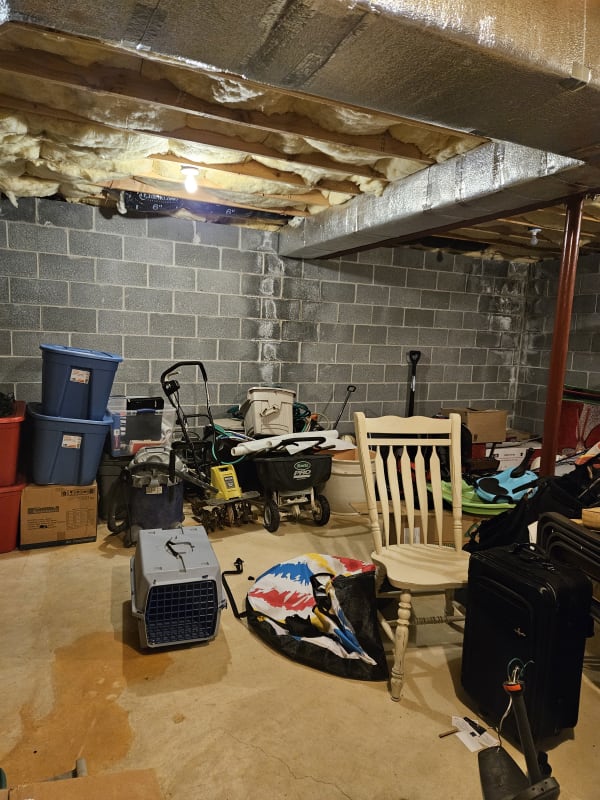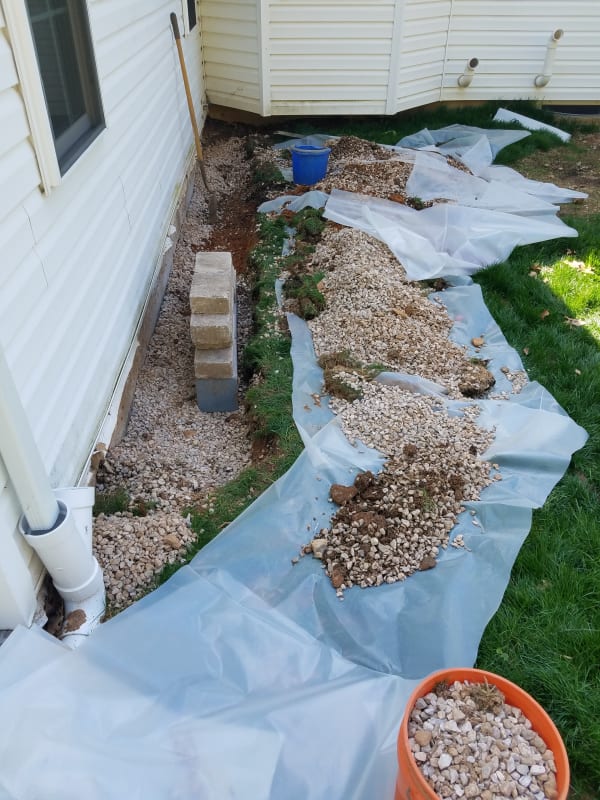I have lived in my house for 11 years. There are 2 areas on the basement wall where we have always had efflorescence on the CMU. One area is where the wall turns the corner. The other area is right below where the steel beam bears on the wall.
For a completely unrelated reason, about 5 years ago, I had to dig up the grade around the one side of the house. I found that there was alot of A57 stone along the perimeter wall (as there should be). I found that in the one area where we ALWAYS get the efflorescence (below the steel beam bearing), we had a 2ft x 2xft column of clay soil right up against the CMU wall. You can kindof see the clay in the second photo below (where the shovel is standing).
I do not know why there was clay in that spot, but there was A57 stone everywhere else. I surmise that the reason this little portion of wall is wet is because the clay soil is touching it there.
Thoughts?
I had a contractor in my basement today (completely unrelated reason) and he pointed out the wet spot and suggested that I put (2) coats of Drylock on the walls in that room. I don't love the idea of drylock because I feel it traps the moisture in the CMU block and causes it to deteriorate quicker. Thoughts on that?
We do not plan on moving anytime soon, but I wonder if painting the walls with Drylock would prevent a home inspector from flagging it.


For a completely unrelated reason, about 5 years ago, I had to dig up the grade around the one side of the house. I found that there was alot of A57 stone along the perimeter wall (as there should be). I found that in the one area where we ALWAYS get the efflorescence (below the steel beam bearing), we had a 2ft x 2xft column of clay soil right up against the CMU wall. You can kindof see the clay in the second photo below (where the shovel is standing).
I do not know why there was clay in that spot, but there was A57 stone everywhere else. I surmise that the reason this little portion of wall is wet is because the clay soil is touching it there.
Thoughts?
I had a contractor in my basement today (completely unrelated reason) and he pointed out the wet spot and suggested that I put (2) coats of Drylock on the walls in that room. I don't love the idea of drylock because I feel it traps the moisture in the CMU block and causes it to deteriorate quicker. Thoughts on that?
We do not plan on moving anytime soon, but I wonder if painting the walls with Drylock would prevent a home inspector from flagging it.


